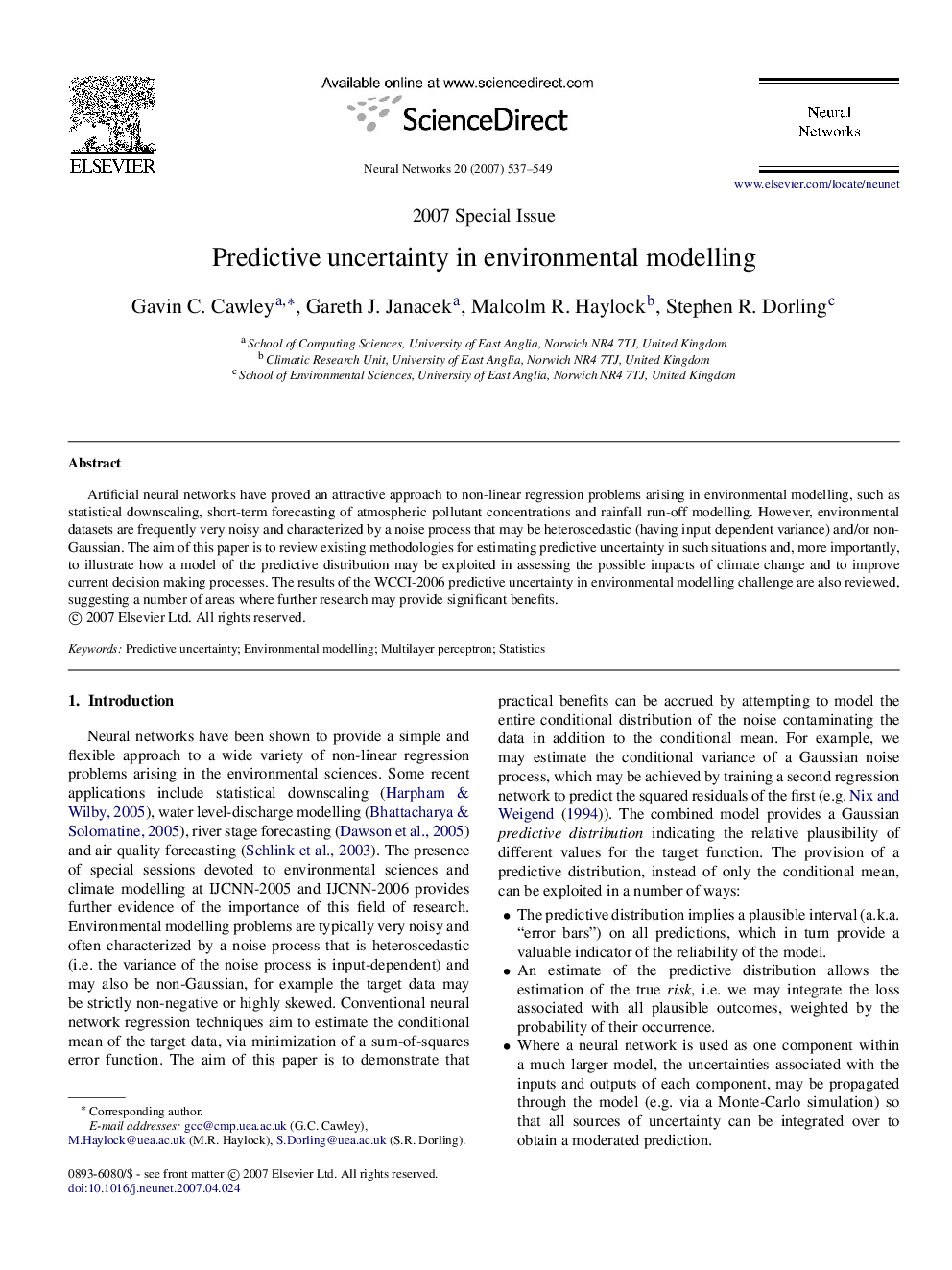| Article ID | Journal | Published Year | Pages | File Type |
|---|---|---|---|---|
| 404837 | Neural Networks | 2007 | 13 Pages |
Artificial neural networks have proved an attractive approach to non-linear regression problems arising in environmental modelling, such as statistical downscaling, short-term forecasting of atmospheric pollutant concentrations and rainfall run-off modelling. However, environmental datasets are frequently very noisy and characterized by a noise process that may be heteroscedastic (having input dependent variance) and/or non-Gaussian. The aim of this paper is to review existing methodologies for estimating predictive uncertainty in such situations and, more importantly, to illustrate how a model of the predictive distribution may be exploited in assessing the possible impacts of climate change and to improve current decision making processes. The results of the WCCI-2006 predictive uncertainty in environmental modelling challenge are also reviewed, suggesting a number of areas where further research may provide significant benefits.
